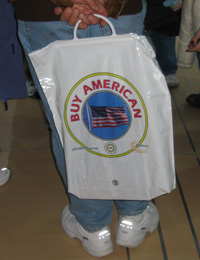DETROIT -- A place defined by its industry, its no-nonsense productivity, Detroit just doesn't look good in glitter. But glitter is what you get at the Detroit Auto Show--or, more officially, the North American International Auto Show--which opened to the public this weekend at the massive COBO Center exhibition hall. For better or worse, this is where Motor City gets gussied up. Jeep Wranglers climb fake rock walls. Sequin-clad salespeople stand on glitzy platforms and rattle off memorized pitches over loudspeakers. But some of the most important action at this year's show doesn't make an appearance on the main-stage. Rather, it's downstairs, tucked away in a decidedly less Vegas-like showroom.
You could spend a whole day in the COBO Center without noticing, but if you wander downstairs you'll find a bunch of automakers you've probably never heard of--many of them from China. There's ChangFeng, a state-owned Chinese company once affiliated with the Chinese Army. A few steps down, there's Shenzhen's BYD Auto, which specializes in hybrids and electrics. And then there's Geely, China's first independent automaker, which is making arrangements for a plant in Mexico and says it wants to export 1.3 million vehicles per year by 2015. Even if they're hidden away in the basement, the mere presence of these automakers can't help but catch Detroit's attention. China represents the world's fastest-growing market for cars and the country's leading manufacturers have developed at breakneck speed. Before Geely's initiation in 2006, no Chinese carmaker had ever appeared at Detroit's show.
Should Detroit worry? Clearly, to some extent, it is worrying. One of the most notable aspects of the auto show was the message parceled out at the event. At a stand on the main floor of the exhibition hall, workers distributed plastic bags which viewers used to collect trinkets and handouts at the different booths. "BUY AMERICAN," the bags said, layered over an image of the American flag and logos of the Ford Motor Company and the United Auto Workers union. Similar sentiments grabbed headlines ahead of Michigan's recent Republican primary. More than half of the state's voters cited the economy as the most important election issue for 2008, and candidates rushed to assert that they would promote local industry and save jobs.

Boosting Motor City's industrial production is all well and good, but experts say focusing on the threat of exports from places like China might not be the most effective way to do it. Despite U.S. concerns over Chinese auto production, particularly in manufacturing cities like Detroit, a number of factors could mitigate the potential impact of accelerated Chinese production, as I outlined in a recent CFR.org Backgrounder. Most significantly, Chinese producers will have their hands full just producing enough cars to meet domestic demand. Xinhua, China's state-owned media outlet, reports Chinese domestic auto sales could surpass ten million vehicles per year by 2010. Other forecasts show that number doubling again by 2020. For an emerging market economy confronting aging factories and stiff environmental pressures, those are steep targets to meet.
Even if China presses for increased exports, as Geely and a few other companies seem inclined to do, this won't necessarily spell doom for U.S. manufacturing jobs. Chinese cars "exported" to the United States would still, for the most part, have to be produced in the United States, not in China. Shipping auto parts remains much easier than shipping fully-constructed automobiles--parts stack easily; full cars, on the other hand, contain a lot of air, which reduces the cost-effectiveness of shipping. Loren Brandt, an expert on Chinese manufacturing, told me that Chinese auto parts and components exports stand poised to grow much faster than exports of automobiles. Even if China does seek to vastly increase its auto exports, analysts say Beijing might find it easier to export regionally rather than seeking large-scale entry into the U.S. market. A firm called Chamco is working to facilitate the auto trade between the United States and China, but many hurdles remain, particularly given the compliance regulations that must be met before one can export cars to the United States.
Unfortunately, U.S. protectionist rhetoric toward China not only clouds perceptions of the threat posed by Chinese automakers--it also loses sight of the potential gains U.S. manufacturers could draw through partnerships with the country. At present, China requires substantial help meeting its booming demand for automobiles, even with its own producers working at full bore. Seventy percent of automobiles made in China are made by non-Chinese-owned companies, though due to government regulation these firms must seek out partnerships with Chinese firms.
European and Asian firms have jumped at the opportunity: Honda recently announced a deal with the Chinese manufacturer DongFeng, and Germany's Daimler cut an agreement with another Chinese automaker, Chery. Now Detroit's big hitters are also coming to the table--General Motors recently announced substantial investments in China's auto industry and says it hopes to double its production in China. Given the sharply competitive nature of the business, seizing on China's production possibilities will require grit, not glitter. Whether or not U.S. automakers succeed remains to be seen, but either way, Beijing promises to play a prominent role in Detroit's future, to a much greater degree than its basement-status at this year's auto show suggests.